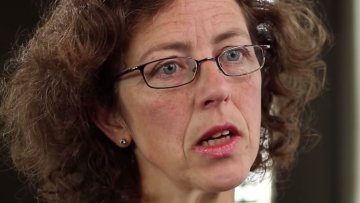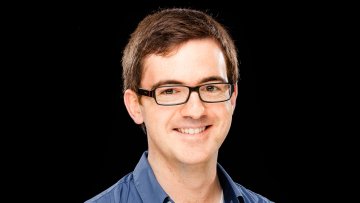Biot-Savart law for irregular vorticity measures and Kaden's approximations
Abstract
I will prove the 2d Biot-Savart law for the vorticity being an unbounded measure $\mu$, i.e. such that $\mu(\mathbb{R}^2)=\infty$, and show how can one infer some useful information concerning Kaden's spirals using it. Vorticities being unbounded measures appear naturally in the engineering literature as self-similar approximations of 2d Euler flows, see for instance Kaden's or Prandtl's spirals. Mathematicians are interested in such objects since they seem to be related to the questions of well-posedness of Delort's solutions of the 2d vortex sheet problem for the Euler equation. My talk is based on a common paper with K.Oleszkiewicz, M. Preisner and M. Szumanska.
Regularity vs Singularities for immiscible incompressible Navier-Stokes fluids
Abstract
In this talk we consider several scenarios involving the interaction among incompressible fluids of different nature. The main concern is the dynamics of the free boundary separating the fluids, which evolves with the velocity flow. The important question to address is whether the regularity is preserved in time or, on the other hand, the system develops singularities. We focus on Navier-Stokes models, where the viscosity of the fluids play a crucial role. At first showing results of finite time blow-up for the case of vacuum-fluid interaction. Later discussing new recent results on global existence for 1996 P.L. Lions' conjecture for density patches evolving by inhomogeneous Navier-Stokes equations.
North British Functional Analysis Seminar on this day
Abstract
For the North Analysis British Seminar, see: https://www.maths.ox.ac.uk/node/29687
Crime Concentration and Crime Dynamics in Urban Environments
Abstract
Crime is a major risk to society’s well-being, particularly in cities, and yet the scientific literature lacks a comprehensive statistical characterization of crime that could uncover some of the mechanisms behind such pervasive social phenomenon. Evidence of nonlinear scaling of urban indicators in cities, such as wages and serious crime, has motivated the understanding of cities as complex systems—a perspective that offers insights into resources limits and sustainability, but usually without examining the details of indicators. Notably, since the nineteenth century, criminal activities have been known not to occur uniformly within a city. Crime concentrates in such way that most of the offenses take place in few regions of the city. However, though this concentration is confirmed by different studies, the absence of broad examinations of the characteristics of crime concentration hinders not only the comprehension of crime dynamics but also the proposal of sounding counter-measures. Here, we developed a framework to characterize crime concentration which splits cities into regions with the same population size. We used disaggregated criminal data from 25 locations in the U.S. and the U.K. which include offenses in places spanning from 2 to 15 years of data. Our results confirmed that crime concentrates regardless of city and revealed that the level of concentration does not scale with city size. We found that distribution of crime in a city can be approximated by a power-law distribution with exponent α that depends on the type of crime. In particular, our results showed that thefts tend to concentrate more than robberies, and robberies more than burglaries. Though criminal activities present regularities of concentration, we found that criminal ranks have the tendency to change continuously over time. Such features support the perspective of crime as a complex system which demands analyses and evolving urban policies covering the city as a whole.
On the Existence of Solutions to the Two-Fluids Systems
Abstract
In this talk I will present the recent developments in the topic of existence of solutions to the two-fluid systems. I will discuss the application of approach developed by P.-L. Lions and E. Feireisl and explain the limitations of this technique in the context of multi-component flow models. A particular example of such a model is two-fluids Stokes system with single velocity field and two densities, and with an algebraic pressure law closure. The existence result that uses the compactness criterion introduced for the Navier-Stokes system by D. Bresch and P.-E. Jabin will be presented. I will also mention an innovative construction of solutions relying on the G. Crippa and C. DeLellis stability estimates for the transport equation.
Deep Neural Networks and PDEs: Approximation Theory and Structural Properties
Abstract
Novel machine learning techniques based on deep learning, i.e., the data-driven manipulation of neural networks, have reported remarkable results in many areas such as image classification, game intelligence, or speech recognition. Driven by these successes, many scholars have started using them in areas which do not focus on traditional machine learning tasks. For instance, more and more researchers are employing neural networks to develop tools for the discretisation and solution of partial differential equations. Two reasons can be identified to be the driving forces behind the increased interest in neural networks in the area of the numerical analysis of PDEs. On the one hand, powerful approximation theoretical results have been established which demonstrate that neural networks can represent functions from the most relevant function classes with a minimal number of parameters. On the other hand, highly efficient machine learning techniques for the training of these networks are now available and can be used as a black box. In this talk, we will give an overview of some approaches towards the numerical treatment of PDEs with neural networks and study the two aspects above. We will recall some classical and some novel approximation theoretical results and tie these results to PDE discretisation. Afterwards, providing a counterpoint, we analyse the structure of network spaces and deduce considerable problems for the black box solver. In particular, we will identify a number of structural properties of the set of neural networks that render optimisation over this set especially challenging and sometimes impossible. The talk is based on joint work with Helmut Bölcskei, Philipp Grohs, Gitta Kutyniok, Felix Voigtlaender, and Mones Raslan
16:00
Fair decisions: applying topology and combinatorics to social science problems (Jal Pavry lecture)
The Society for Mathematical Biology has announced its 2018 Awards for established biologists and among the winners are Oxford Mathematicians Helen Byrne and Francis Woodhouse.
Working together: end-of-term mathematical board games
Abstract
Would you like to meet some of your fellow students, and some graduate students and postdocs, in an informal and relaxed atmosphere, while building your communication skills? In this Friday@2 session, you'll be able to play a selection of board games, meet new people, and practise working together. What better way to spend the final Friday afternoon of term?! We'll play the games in the south Mezzanine area of the Andrew Wiles Building, outside L3.



